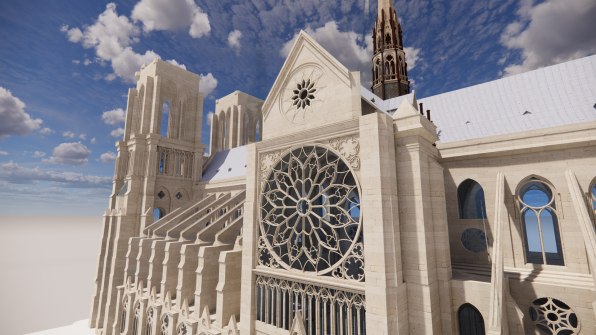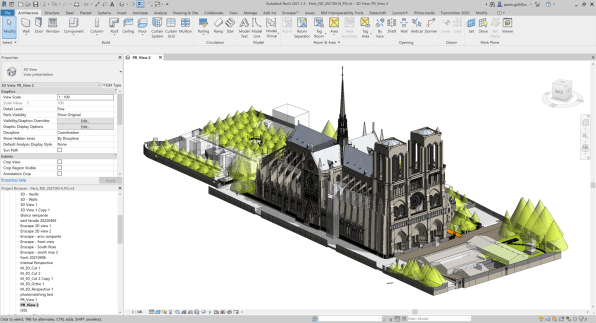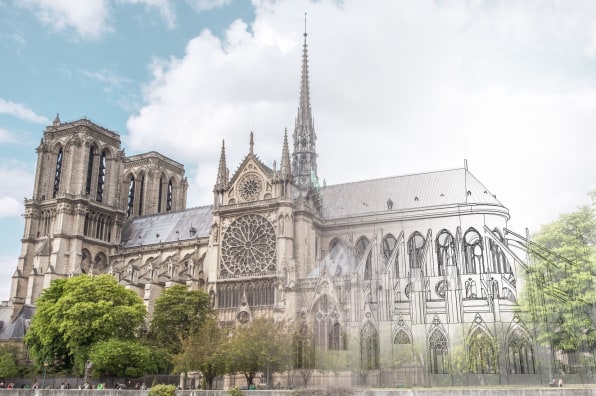[ad_1]
It’s been roughly four years since a fire ripped through Notre Dame, the Catholic cathedral in Paris that’s historically drawn millions of visitors every year.
Since then, people from around the world have rallied to support an effort championed by French President Emmanuel Macron that’s slated to have the building back open to the public by the end of next year. Teams working to restore the Gothic cathedral have sought to rebuild much of the damaged sections using materials like oak wood and stone that have stood the test of centuries.

But the builders, architects, and engineers do have the advantage of some 21st century technologies, including modern building information modeling (BIM) software that enables them to work with painstakingly detailed 3D digital models of the cathedral and surrounding site backed by powerful cloud computing technology.
“It allows you to really understand a lot of how a building fits together, how it’s constructed,” says Andrew Anagnost, CEO of design software giant Autodesk, which has contributed technical consulting, software, and financial assistance to the project since shortly after the fire. A digital model, which took more than a year to create, includes more than 12,000 objects, over 30,000 square meters of stone wall, more than 3,900 square meters of lead roof, and 186 cathedral vaults.

“We immediately gave money because we wanted to get in there and start making a statement and trying to help, but that’s not where we add the most value,” Anagnost says. “The most value is what we were able to do.”
Luckily, Anagnost explains, the French company Art Graphique and Patrimoine (AGP) had already captured detailed digital scans of much of the cathedral as it stood before the fire broke out. AGP and Autodesk then worked to rescan the site, seeking to understand what was changed by the blaze.

It was an intricate process. Onsite workers captured the point-by-point 3D geometry of the cathedral with laser and photo equipment, all while observing strict rules designed to limit risks related to the building materials used in the church. Then, others turned the data points from that process into detailed shapes and objects, down to individual building stones. That let experts see how the building shifted in the fire—important for anticipating any stability issues—and plan out the process of reconstruction.
“It took about a year to take all of these points and make them intelligent objects that have the information that you can do something with,” says Nicolas Mangon, VP of architecture, engineering, and construction industry strategy at Autodesk. “We used the two different datasets and put them together so we could see the holes in the roof but we could also see if the main structure moved.”
Now, architects and engineers on the project can use the 3D model for everything from simulating different options for lighting the rebuilt cathedral to planning in detail how to position trucks, cranes, and other equipment on the small Parisian island where the cathedral is situated. The models similarly help plan for crews to work in the sometimes-constricted spaces within the medieval church, says Mangon, who studied engineering at the Ecole Spéciale des Travaux Public, with classes just blocks from Notre Dame.
“It’s like Mission: Impossible when they plan,” says Mangon. “Every little piece is done digitally, and with the 3D model you can simulate everything.”
Even when the cathedral is reopened, which reportedly will be next year, the model may still serve important roles: Mangon says the company is currently in discussions about deploying it to manage aspects of the complex going forward, potentially using sensors that could pinpoint the location of any future fires.
[ad_2]
Source link

